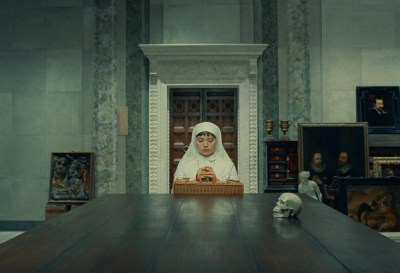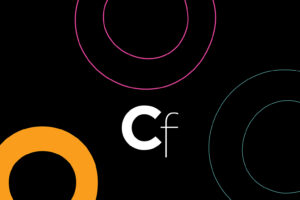Wes Anderson’s ‘The Phoenician Scheme’ Features a Real Renoir and a Salient Spoof of Art Collecting

“Never buy good pictures,” says Zsa-Zsa Korda, the protagonist of Wes Anderson’s new film, The Phoenician Scheme, now playing in theaters in New York and Los Angeles. “Buy masterpieces.” It’s good advice to any aspiring art collector. But with what money? Korda has less words of wisdom to offer on that front.
That’s because Korda, played by Benicio del Toro, has found himself in a pickle: he’s trying to execute a shady plan—the titular Phoenician Scheme—to open a waterway somewhere in the vicinity of the Mediterranean, but he doesn’t have the funds needed to do so. (There’s also the fact that assassins and international governments keep coming after this jet-setting high roller: he’s survived being shot out of the air six times when the film begins and finds his plane downed again by its ending.) He spends much of the movie trying to wrangle his business associates into filling the financial gap, enlisting his estranged daughter, a nun named Liesl (Mia Threapleton), as his collaborator.
And yet, it would not be so hard for Korda to make some quick cash—if he just sold a few of the paintings in his 16th-century palazzo, home to nine sons and an art collection arranged so haphazardly that most of the pictures aren’t even hung from the walls. The house was itself modeled on the home of art collector Calouste Gulbenkian, a British Armenian businessman who bought thousands of artworks and was accused of trying to dodge paying taxes in England prior to his death in 1955.
There’s a glorious Floris Gerritsz. van Schooten still life from the 17th century featuring a fatty roast on a platter (for breakfast!), and a 1942 René Magritte in which a house plant appears to have birds for its leaves. There’s also an 1889 Pierre-Auguste Renoir portrait of the artist’s nephew, long golden locks and all. Liesl sleeps beneath it, barely aware of this Impressionist painting’s presence.
That Korda has amassed such a collection—and that he seems to care so little for it, never mentioning it once—suggests that the art he has bought is a momentary distraction from his seedy business and his fractured familial relationships. It functions for him like window dressing, a mere backdrop for the nefarious dealings taking place. His attitude obliquely recalls how Russian oligarchs treated their prized Picassos and Rothkos before the war in Ukraine hindered their ability to continue collecting.
Anderson is a director known for imagining ornate, symmetrical sets that themselves feel like art installations—hence why he was brought on to design a café for the Fondazione Prada, a museum in Milan that has built a long-term relationship with him. The artworks in The Phoenician Scheme resemble props, and it would be understandable to imagine them as fakes, especially because Anderson knowingly fabricated some art history for a prior work, his 2021 film The French Dispatch. But here’s the catch: some of them are real.

Still from The Phoenician Scheme, 2025.
Courtesy TPS Productions/Focus Features ©2025 All Rights Reserved
The Renoir is authentic, and was even once owned by the actress Greta Garbo, whose estate sold it at Sotheby’s in 1990 for $7 million. According to a credit line from Getty Images, which has pictures of the Renoir in its library, the work comes from the holdings of the mega-collecting Nahmad family.
“You can tell the difference,” Anderson wrote of the painting in his production notes, “and it has an aura to it.” His characters, it seems, cannot, since they mostly ignore it. The Magritte, too, is real, and so is the van Schooten. The Magritte formerly belonged to Heiner Pietzsch, who appeared on the ARTnews Top 200 Collectors list prior to his death in 2021; it now resides in the collection of the Berlin State Museums. The van Schooten is owned by the Hamburger Kunsthalle, a German museum.
Other works, including a painting by Peter Paul Rubens, are replicas, however. That it becomes tough for viewers to distinguish which works are authentic is partially the point: Korda can’t tell the difference between a good artwork and a bad one, a bona fide masterpiece and a knockoff, even as he wolfs down books about patrons of the High Renaissance and connoisseurship during his tumultuous adventures by air. He doesn’t know the worth of a truly valuable thing, just as he doesn’t know the worth of Liesl, whom he is trying to designate as heir to his estate in the event of his untimely passing.

Pierre-August Renoir, Enfant assis en robe bleue (Portrait d’Edmond Renoir fils), 1889.
Getty Images/Collection Nahmad, Monaco
Then there’s Korda’s haphazard display of his pictures, with some leaned against walls rather than delicately hung. “Wes had the thought that his collection isn’t a finished thing on display, but rather in flux,” Adam Stockhausen, the film’s production designer, told Elle Decor. “Zsa-Zsa has a great assortment of paintings, sculpture, and decorative objects but they are always coming and going.” They are merely props in Korda’s own universe.
The Phoenician Scheme is, in part, a parody of collectors who buy art with that kind of mindset. Here’s Korda once more: “Never buy good pictures. Buy masterpieces.” Anderson might slap on an addendum: Buy great works, but cherish them properly.




